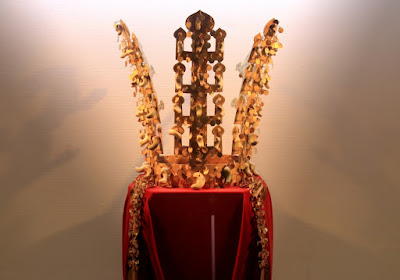History of Korean Beauty Part 1: Silla Period
Asia Society Korea has prepared a series of blog posts to promote Korean culture and celebrate beauty beyond its appearance as part of the Leo Gala series to mark the Month of Women's History. This collection will examine the various styles of beauty from the Silla Dynasty to the present and the development process of Korean feminism. The first episode of the series will explore the concept of beauty in the Silla Dynasty, a liberal country that flourished with dynamic trade.
The ideology that led to Silla's aesthetic standards was the idea of "a beautiful soul dwells in a beautiful body." As beauty was important to the people of Silla, gold and gold, which were popular during that period, were commonly used to make ornaments. The Silla were immersed in makeup, hair shapes, and clothes to decorate themselves. Some scholars even defined the era as "a cliffboyant."대딸방
There is a mention of physical characteristics such as attractive appearance and bright skin tone, which were put forward as prerequisites for a good leader. In the Samgukusa history, Park Hyuk-geose, the founder of the myth, is born from an egg. This surreal being is described as an overwhelmingly beautiful man with a shining body after a bath. Park Hyuk-geose's wife then describes her as an attractive woman with outstanding beauty. This short description supports the historical interpretation that makeup, skin care, and hair style were the most important cultural meanings beyond gender to Silla and its people.
In the Silla period, makeup was used somewhat weakly. Over the years, however, as the customs of the time demanded more sophistication and grandeur, the tendency to wear heavier and more colorful makeup gradually emerged. In terms of coloring, Yeonji (;), a red make-up made of safflower, was the most favored by Silla people. In addition, in order to have a clean and delicate appearance, eyebrows were pulled out to make the shape of the face neat and use it to enlarge the forehead. The eyebrows were drawn by mixing cotton flowers, burnt sesame seeds, and the ash of the beech tree with soot called Mimuk (; t trees. The finale of this self-enhancing technology involved using setting powder to smooth and brighten the skin tone. With this widespread heat of makeup, Silla also improved the production capacity of related products and products.
The Silla, who were given cultural and political importance for their bright skin color and beauty, took regular baths as part of their daily lives. This routine then culminated in the belief that a pure heart accompanied a clean body. According to Samguk Yusa, when a sinner ran away, neighbors in the same community grabbed their son and bathed him in a pond in the palace to atone for the sinner's fault. Over time, bath facilities opened in large cities, and some of the upper classes built their own bathtubs at home. Most of the farmers who could not afford this luxury visited the temple and replaced the bathhouse.
Silla women enjoyed wearing long hair, and wore hair accessories that developed with the development of wigs, an elaborate wig that used a lot of wigs and accessories. Silla's gachae were popular in other regions, including some parts of China today, but were not limited to this. Their exceptional quality stems from the amount of time and material they spent making them. Some of the products used to treat hair were camel flowers and dog fruit.
The emphasis on Silla's beauty beyond the aesthetic aspect is further emphasized by the main characters. Misil, Queen Seondeok, and Hwarang are three characters representing the beauty of the Silla period. Misil is a character who appears in the history book Hwarangsaegi. Whether Misil is a real person is ambiguous because of the validity of the book itself, which is currently controversial. However, she is said to have been one of the most beautiful women in Korean history. She was given the title of Gungju, which was given to the king's wife or daughters and can be directly translated as the "owner of the palace." Queen Seondeok was the 27th king of Silla and the first queen in Korean history. Along with her intelligence and wisdom, she was also famous for her beauty - although historical debates surrounding the authenticity of these arguments remain in academia. Finally, the gallery was a group of trained knights mainly composed of adolescent boys.


Having read your article. I appreciate you are taking the time and the effort for putting this useful information together.
ReplyDeleteB.Com Exam Schedule